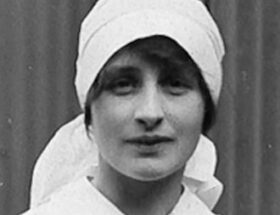
Early life

Miss Georgiana Spencer was born on 7 June 1757, as the first child of John Spencer (later Earl Spencer) and his wife, Georgiana (née Poyntz), at the Spencer family home, Althorp.
After her daughter’s birth, her mother wrote that “I will own I feel so partial to my Dear little Gee, that I think I never shall love another so well”. Two younger siblings followed: Henrietta and George.
Mr John Spencer, great-grandson of John Churchill, 1st Duke of Marlborough, came from a wealthy English noble family. He built a Spencer family residence at St. James’s, London, and raised his children there.
The parents raised Georgiana and her siblings in a happy marriage which bears no record of there ever having been any extramarital affairs – a rarity in the era. Meanwhile, Georgiana grew to be close to her mother who was said to favour Georgiana over her other children.
When her father assumed the title of Viscount Spencer in 1761, she became The Honourable Georgiana Spencer. In 1765, her father became Earl Spencer and she Lady Georgiana Spencer.
Marriage

On her seventeenth birthday, 7 June 1774, Lady Georgiana Spencer was married to society’s most eligible bachelor, William Cavendish, the 5th Duke of Devonshire. The wedding took place at Wimbledon Parish Church. It was a small ceremony attended only by her parents, her maternal grandmother (Lady Cowper), one of her prospective brothers-in-law, and soon-to-be sister-in-law (the Duchess of Portland).
Her parents were emotionally reluctant to let their daughter go, but she was wed to one of the wealthiest and most powerful men in the land. Her father, who had always shown affection to his children, wrote to her, “My Dearest Georgiana, I did not know till lately how much I loved you; I miss you more every day and every hour.” Mother and daughter continued to correspond throughout their lives and many of their letters survive.
From the beginning of the marriage, the Duke of Devonshire proved to be an emotionally reserved man who was quite unlike the Duchess’s father and who did not meet the emotional needs of the Duchess.
The spouses also had little in common. He would seldom be at her side and would spend nights at Brooks’s playing cards. The Duke continued with adulterous behaviour throughout their married life and discord followed pregnancies that ended in miscarriage or failure to produce a male child as heir.
Before their marriage, the Duke had fathered an illegitimate daughter, Charlotte Williams, born from a dalliance with a former milliner. This was unknown to the Duchess until years after her marriage to the duke. After the death of the child’s mother, she was compelled to raise Charlotte herself.
The Duchess of Devonshire was “very pleased” with Charlotte, although her own mother expressed disapproval: “I hope you have not talk’d of her to people.” The Duchess replied, “She is the best humoured little thing you ever saw.”
In 1782, while on a retreat from London with the Duke, the Duchess met Lady Elizabeth Foster in the City of Bath. She became close friends with Lady Elizabeth, who had become destitute after separating from her husband and three sons. Given the bond that developed between the two women, with the Duke’s acquiescence, the Duchess agreed to having Lady Elizabeth live with them. When the Duke began a sexual relationship with Lady Elizabeth, it was arranged that her live with them permanently.
While it was common for male members of the upper class to have mistresses, it was not common or generally acceptable for a mistress to live so openly with a married couple. Furthermore, the Duchess had become emotionally dependent on Lady Elizabeth, whom she believed to be her best friend. Having no alternative, she became complacent over the matter.
The arrangement among the three is more commonly referred to as a ménage à trois, but, while the relationship between the Duke and Lady Elizabeth was obviously sexual, there is no concrete evidence of anything beyond emotional dependence, and a particular and open affection, on the part of the Duchess, towards Lady Elizabeth.
In one of her letters, the Duchess of Devonshire wrote to Lady Elizabeth, “My dear Bess, Do you hear the voice of my heart crying to you? Do you feel what it is for me to be separated from you?” Nevertheless, Lady Elizabeth Foster herself was said to actually envy her and wished for her position.
However Lady Elizabeth’s love for her was proven at her death years later when a locket, containing a strand of the Duchess’s hair, was found around her neck, as well as a bracelet also containing hair of the Duchess on a table beside her deathbed. Lady Elizabeth was reported to have insinuated her way into the marriage by taking advantage of the Duchess’s friendship and love and having “engineered her way” into a sexual relationship with the Duke.
Lady Elizabeth engaged in well documented sexual relations with other men while she was in the “love triangle” with the Duke and Duchess. Among their contemporaries, the relationship between the Duchess of Devonshire and Lady Elizabeth Foster was the subject of speculation which has continued beyond their time. The love triangle itself was a notorious topic; it was an irregular arrangement in a high-profile marriage. Lady Elizabeth’s affair with the Duke resulted in two illegitimate children: a daughter, Caroline Rosalie St Jules, and a son, Augustus Clifford.

Despite her unhappiness with her detached and philandering husband and volatile marriage, the Duchess, as per the custom of the day, was not socially permitted to take a lover without first having produced an heir. The first successful pregnancy resulted in the birth of Lady Georgiana Dorothy Cavendish (called ”Little G”) on 12 July 1783.
The Duchess had developed a strong mothering sentiment since raising Charlotte and she insisted on nursing her own children (contrary to the aristocratic custom of having a wet nurse). On 29 August 1785, a second successful pregnancy resulted in another daughter, Lady Harriet Elizabeth Cavendish (called “Harryo”).
Finally, on 21 May 1790, the Duchess gave birth to a male heir to the dukedom: William George Spencer Cavendish, who took the title of Marquess of Hartington at birth and was called “Hart”. With the birth of the Marquess of Hartington, the Duchess was able to take a lover. While there is no evidence of when the Duchess began her affair with Charles Grey (later Earl Grey), she did become pregnant by him in 1791.
Sent off to France, the Duchess believed she would die in childbirth. In this spirit, she wrote a letter to her recently born son stating, “As soon as you are old enough to understand this letter it will be given to you. It contains the only present I can make you–my blessing, written in my blood…Alas, I am gone before you could know me, but I lov’d you, I nurs’d you nine months at my breast. I love you dearly.”
On 20 February 1792, Eliza Courtney was born without complications to mother and child and the Duchess was forced to give away the illegitimate daughter to Grey’s family. The Duchess would later be given the opportunity to pay visits to her illegitimate daughter, providing her with presents and affection.
While in exile in France in the early 1790s, the Duchess of Devonshire suffered from isolation and felt her separation from her children. To her eldest, she wrote: “Your letter dated the 1st of Nov was delightful to me tho’ it made me very melancholy my Dearest Child. This year has been the most painful of my life. . . when I do return to you, never leave you I hope again–it will be too great a happiness for me Dear Georgiana & it will have been purchased by many days of regret – indeed ev’ry hour I pass away from you, I regret you; if I amuse myself or see anything I admire I long to share the happiness with you – if on the contrary I am out of spirits I wish for your presence which alone would do me good.”
In order to return to England and her children, she conceded to her husband’s hypocritical demands and denounced her love for Charles Grey. Records of her exile in France were subsequently erased from the family records. However, the children of the Duke and Duchess had at one point been informed as to the reason of her absence during that period of their lives.
Throughout her marriage, while the Duchess of Devonshire coped with the marital arrangements on the surface, she nevertheless suffered emotional and psychological distress. She sought further personal consolation from a “dissipated existence” in passions (socializing, fashion, politics, writing), addictions (gambling, drinking, and drugs), and affairs (with a number of men, not just Grey, possibly including the bachelor Duke of Dorset).
Pursuits
With her renowned beauty and character, alongside her marriage to the affluent and powerful Duke of Devonshire, the Duchess enjoyed preeminence in society and was a high emblem of the era. Her keen sense made her the extravagant female leader in fashion and style in England.
Using her influence as a leading socialite and fashion/style icon, she contributed to politics, science, and literature. As part of her illustrious social engagements she would gather around her a large salon of literary and political figures. Among her major acquaintances were the most influential figures of her time including the Prince of Wales (later King George IV), Marie Antoinette of France and her favourite in court, the Duchess of Polignac, Charles Grey (later Earl Grey and British Prime Minister) and Lady Melbourne (lover of the Prince of Wales).
Famously when the Duchess was stepping out of her carriage one day, an Irish dustman exclaimed: “Love and bless you, my lady, let me light my pipe in your eyes!” Thereafter, whenever others would compliment her, the duchess would retort, “After the dustman’s compliment, all others are insipid.”
Politics
The Spencer family from which she derived, was an ardent supporter of the Whig party as were she and the House of Cavendish. However, because the Duke’s high position in the peerage disallowed him from participating so commonly in politics, the Duchess took it as a positive outlet for herself.
In an age when the realization of women’s rights and suffrage were still more than a century away, the Duchess became a political activist as the first woman to make active and influential front line appearances on the political scene. Having begun her involvement in politics in 1778 she relished Enlightenment and Whig party ideals and took it upon herself to campaign for Whig policies which were anti-crown and advocated for liberty against tyranny.
At the time of her involvement, King George III and his ministers had a direct influence over the House of Commons, principally through their power of patronage. The Prince of Wales, who always relished going against the grain with his father, joined the Whig party at the time his friend, the Duchess, became involved. She was renowned for hosting dinners that became political meetings and she took joy in cultivating the company of brilliant radicals.
During the general election of 1784, the Duchess became a major subject of scrutiny. Fanciful rumours and political cartoons circulated during the campaign, ridiculing her for securing votes in exchange for sexual – and monetary – rewards. Thomas Rowlandson even satirized her with a rumour of her trading kisses in his print “THE DEVONSHIRE, or Most Approved Method of Securing Votes”.
Her mother pleaded with her to step down, but the Duchess was not daunted and was adamant in her activism. On election day, the Duchess of Devonshire walked the streets of London, even gaining blisters on her feet, meeting face-to-face with commoners as equals.
She was instrumental in the success of Fox and Lord Hood, but after the extensive campaigning and negative media against her, she retired, after the win, from the political arena for a while. In 1788, she returned to political activism though behind the scenes.
Even in the last years of her life, she pushed ahead in the field and attempted to help rebuild the Whig party which had become fragmented. Her efforts were to no avail and the political party would eventually come to dissolve decades after her death.
Literature
In her life, the Duchess was an avid writer and composed a number of works (both prose and poetry) of which some were published.
She composed poetry as a young girl to her father and some of it later circulated in manuscript and was read by Walpole (who said it was “easy and prettily expressed, though it does not express much”) and Reverend William Mason (who was more favorable with higher opinions).
The first of her published literary works was Emma or The Unfortunate Attachment: A Sentimental Novel in 1773.
In 1778, the epistolary novel The Sylph was released. Published anonymously, it had autobiographical elements, centering on a fictional aristocratic bride who had been corrupted and as “a novel-cum-exposé of aristocratic cohorts, depicted as libertines, blackmailers, and alcoholics.”
It has been speculated that The Sylph may have instead been written by Sophia Briscoe and a receipt at the British Library suggests that Briscoe was paid for the published work. However, it is thought more likely that Briscoe may have served as an intermediary between the Duchess of Devonshire and her publisher, so that the Duchess could keep her anonymity. The Sylph was a success and underwent four reprintings.
One more piece was published in the last years of her life, The Passage of the Mountain of Saint Gothard, first in an unauthorized version in the ‘Morning Chronicle’ and ‘Morning Post’ of 20 and 21 December 1799, then in a privately printed edition in 1800. A poem dedicated to her children, The Passage of the Mountain of Saint Gothard was based on her passage of the Saint Gotthard Pass, with Bess, between 10 and 15 August 1793 on her return to England.
The thirty-stanza poem, together with 28 extended notes, were furthermore translated into some of the main languages of Western Europe including into French (1802), Italian (1803) and German in 1805. The Passage of the Mountain of Saint Gothard was then reprinted in 1816 after the Duchess’s death.
Science
The Duchess played a key role in formulating, along with Thomas Beddoes, the idea of establishing the Pneumatic Institution in Bristol. Her interest arose in part as she was related through marriage to the pneumatic chemist Henry Cavendish.
She took interest in scientific experiments and began a collection of crystals at Chatsworth (the main seat of the dukedom of Devonshire).
Gambling
As was common among the aristocracy of her time, the Duchess routinely gambled for leisure and amusement. Her gaming spiraled into a ruinous addiction, however, made worse by her emotional instability.
In the first years of her marriage, she accumulated debts that surpassed the 4,000 pounds that the duke provided her annually as pin money. Her own mother was disapproving and admonished her, unsuccessfully, to break her habit.
After she had incurred over 300,000 pounds in debt, the Duchess implored her parents to give her a loan as she absolutely would not inform her husband of her debts. Her parents acquiesced and told her to inform the duke, who nevertheless found out beforehand and repaid them.
For the rest of her life the Duchess continued to amass an immense, ever escalating debt that she always tried to keep hidden from her husband (even though he was among the richest men in the land) and while she would admit to some amount, it was always less than the total, which even she could not keep up with.
In confidence, she would ask for loans from the Prince of Wales and at one point, to try to settle some of her debts, she did not shrink from pressing her friend the affluent banker Thomas Coutts for funds.
Later life and death
Her absence from English society and exile in France had isolated the Duchess and was a low point for her in every respect; she returned to England a “changed woman”. The Duke began suffering from gout and she spent her time at his side nursing him.With also a new miscarriage, this circumstance with her husband brought about a softening and closeness between the spouses.
She took a positive interest in science, took up writing again (producing two more works) and even continued her political activism while trying to rebuild the Whig party. The Duchess also came to meet and become friends with the wife of her former lover, Charles Grey.
In 1796, the Duchess of Devonshire succumbed to illness in one eye, with the medical treatment resulted in a scarring of her face. However, “those scars released her from her fears. All the inhibitions about whether she was beautiful enough or whether she was up to the job left her.”
In her late thirties, the Duchess was able to regain preeminence and enjoyment in open society, although her personal life would continue to be marred by degrees of unhappiness, debt, and decline in health.
During her early forties, the Duchess of Devonshire devoted her time to the coming out of her eldest daughter, Lady Georgiana Dorothy Cavendish. The debutante was presented in 1800 and the Duchess saw her daughter wed Lord Morpeth, the heir apparent of the Earl of Carlisle, in 1801.
Her health continued to decline well into her forties and her addiction to gambling continued. She once reached out to her mother, begging for a sum of 100 pounds and complaining to her of jaundice. While her mother at first believed her daughter was just ill from her gambling, Countess Spencer, as well as those around the Duchess, soon came to realize the duchess was truly sick. She was thought to be suffering from an abscess on her liver.
Georgiana Cavendish died on 30 March 1806, at 3:30, at the age of 48.She was surrounded by her husband, her mother, her sister (the Countess of Bessborough), her eldest daughter and Lady Elizabeth Foster. They were all said to have been inconsolable over her death.
For the first time, the Duke showed moving emotion towards his late wife, as a contemporary wrote, “The Duke has been most deeply affected and has shown more feeling than anyone thought possible–indeed every individual in the family are in a dreadful state of affliction.”
The late Duchess’ eldest daughter furthermore poured out her feelings, “Oh my beloved, my adored departed mother, are you indeed forever parted from me–Shall I see no more that angelic countenance or that blessed voice–You whom I loved with such tenderness, you who were the . . . best of mothers, Adieu–I wanted to strew violets over her dying bed as she strewed sweets over my life but they would not let me.”
The Prince of Wales himself lamented: “The best natured and the best bred woman in England is gone.” Thousands of the people of London congregated at Piccadily, where the Cavendish home in the city was located, to mourn her. She was buried at the family vault at All Saints Parish Church in Derby.


